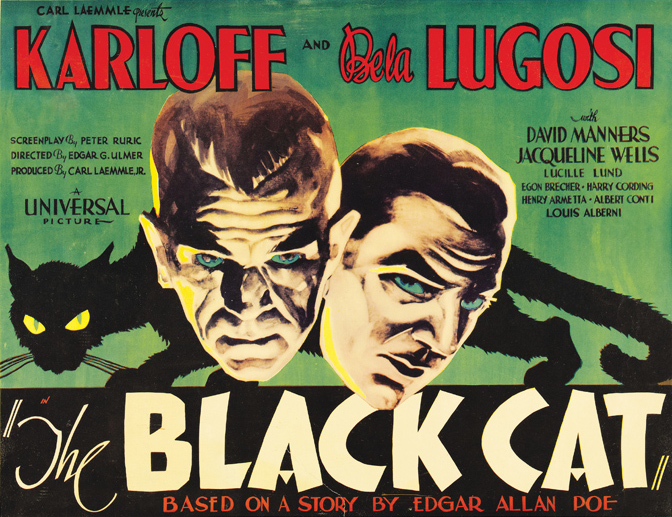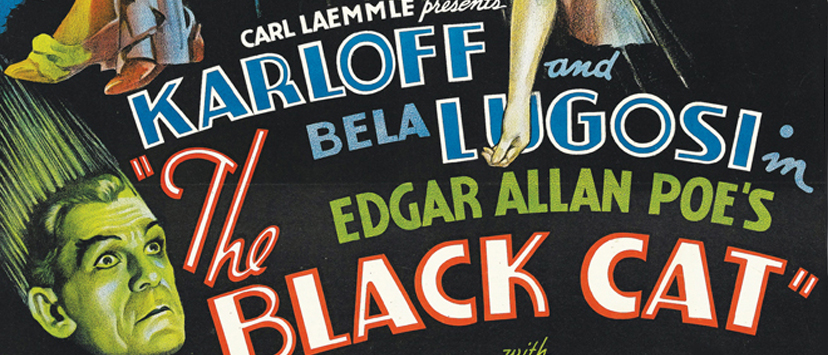
Proto-noir horrors in first
(and best) Karloff-Lugosi teaming
By Mark Voger, author, “Monster Mash: The Creepy, Kooky Monster Craze in America 1957-1972″
Genocide, necrophilia, incest, torture and devil worship.
No, not a buddy movie starring Ed Gein, John Wayne Gacy and Aleister Crowley.
These are some powerful, horrible themes in Edgar G. Ulmer’s 1934 one-of-a-kind proto-noir horror, “The Black Cat.”
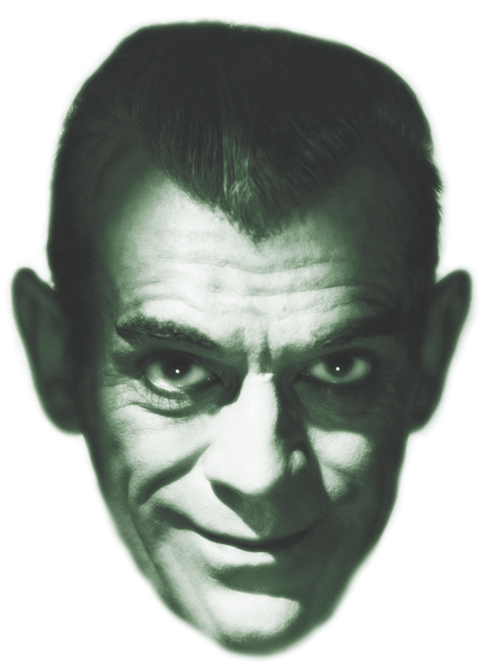
The first (and best) of eight films to team the screen’s greatest horror stars, Bela Lugosi and Boris Karloff, Universal’s “The Black Cat” hints at, and sometimes outright depicts, the abominations listed above. There are no supernatural elements. This is a sick movie, and much of its sickness is not shown or explained, but planted in the viewer’s noggin via suggestion.
Setup: While honeymooning in Hungary, American newlyweds Peter and Joan Alison (David Manners and Jacqueline Wells) encounter a mysterious stranger, Vitus Werdegast (Lugosi), who explains why is traveling to Marmorus: “I go to visit a friend.” Werdegast is courtly, but you needn’t spend too much time with him to realize he is one messed up guy.
As they all share a bus in rain-swept Marmorus, their driver goes into gory detail about the tens of thousands who died in a military massacre on this very spot. Then he dies on this very spot; the car crashes, killing the driver and injuring Joan.
There’s only one thing to do, though it kind of messes up Werdegast’s plans: Take the unconscious Joan into the home of the man Werdegast has come to “visit,” his onetime commanding officer, the enigmatic architect Hjalmar Poelzig (Karloff).

The house – more like a compound — is an expansive, modern marvel. You might call it the demon child of German Expressionism and Art Deco. (It is equipped with a neon-lit intercom system – very rare in 1934.) Karloff’s introduction as Poelzig is off-putting. There is no announcement. A door simply opens – we don’t know how or by whom – and there he is, looking all weird in a black robe that Devo would covet, glaring at everyone, not uttering a syllable.
Poelzig doesn’t seem surprised that his old comrade Werdegast has returned to Marmorus after 15 years. For the sake of the American visitors, Werdegast puts on a little act. He pretends everything is perfectly normal, politely explaining to Poelzig that Joan was injured and, well, they just had to bring her here. After an excruciating silence, Poelzig joins in Werdegast’s masquerade. He says, unconvincingly, “Of course.” As if he, too, is just a normal guy.
But once Werdegast and Poelzig are alone, the masks come off.
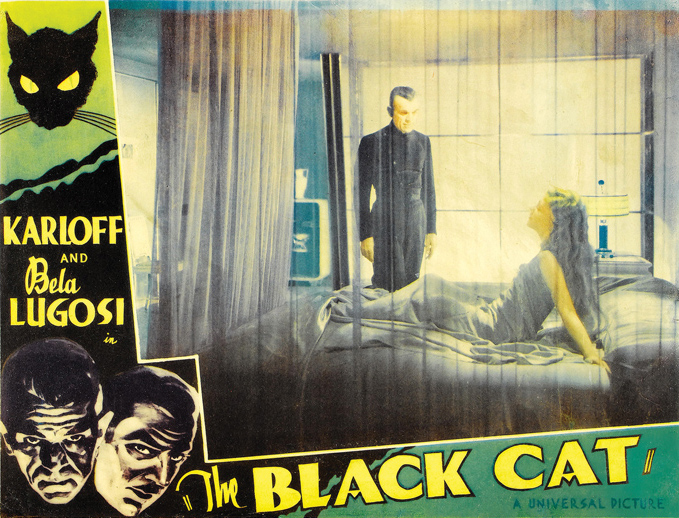
The exchange that follows could be called mere exposition. But in a film that heretofore guarded its secrets jealously, the dialogue is filled with sudden revelations, which come out in a torrent. The effect is fairly shocking. Werdegast indicts Poelzig. “You sold Marmorus to the Russians,” he begins. “You scurried away in the night and left us to die. Is it to be wondered that you should choose this place to build your house. A masterpiece of construction, built upon the ruins of the masterpiece of destruction. A masterpiece of murder. The murderer of 10,000 men returns to the place of his crime.”
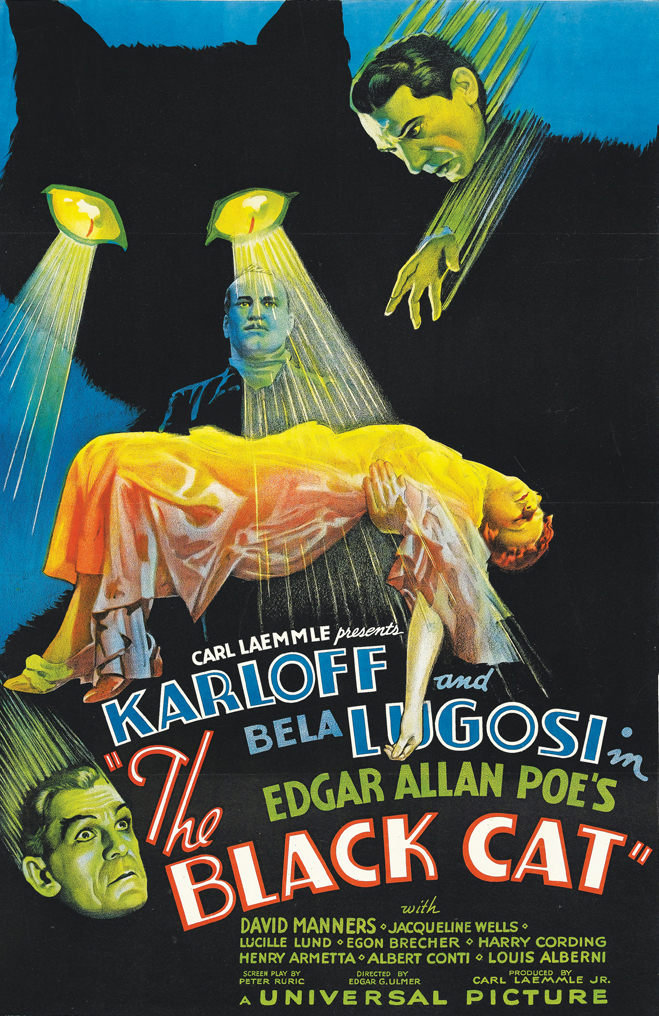
Poelzig listens quietly, even patiently, to Werdegast’s accusations. That is, until Werdegast accuses Poelzig of stealing his wife. “Vitus, you’re mad,” Poelzig finally says, and for a moment, we honestly wonder if perhaps we have it all wrong – if Poelzig is a victim of Werdegast’s paranoid delusions.
A short time later, Werdegast does himself no favors when, in a sudden fit of fear, he throws a knife at one of Poelzig’s cats, killing it. (Then again, Poelzig doesn’t exactly cry over the loss of his house pet, and seems to relish telling his guests all about Werdegast’s profound ailurophobia.)
Necrophilia is hinted at in the scenes in which Poelzig tours his collection of lovingly preserved dead women. The bodies are behind glass, and none show any wear or decomposition. All are young (at the time of death, anyway) and pretty (ditto) and sheathed in sheer, clingy material. One can only wonder why Poelzig keeps these gruesome trophies. Nothing good comes to mind. It is a disturbing sequence – perhaps the most disturbing in horror films — and one without a drop of blood.

Later, when a blank-faced Werdegast demands to know what became of his wife, Poelzig takes him to her — another of his lovingly preserved bodies. (“You see, Vitus? I have cared for her tenderly and well.”) It is a shock to see her, because we already have. The same actress, Lucille Lund, plays Werdegast’s wife and daughter, both named Karen — and both married to Poelzig. The late Karen’s hair appears to be floating upward, as if she is immersed in a solution, but there does not appear to be a solution. Another of Poelzig’s modern innovations?
Tears stream down Werdegast’s face. “Why is she like this?” he sobs.
“I wanted to have her beauty for always,” says Poelzig softly.
It is the finest scene these two actors ever played together, and perhaps Lugosi’s finest dramatic moment on the screen. His pain is plain.
But it must be said that “The Black Cat” is not a perfect movie. Lugosi is called upon to utter one of the crummiest lines in his cinematic career — and this is a guy who made nine movies for Monogram and three for Ed Wood. After Werdegast explains that the narcotic he administered to Joan can produce a “mediumistic” state, Peter remarks that it sounds like “a lot of supernatural bologna.” Responds Lugosi with a straight face: “Supernatural? Perhaps. Bologna? Perhaps not.”
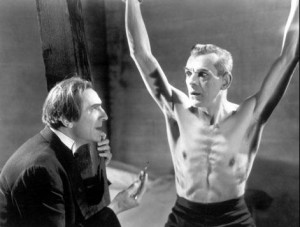
Another complaint: It seems like piling on when we learn that Poelzig is the leader of a satanic cult. Wasn’t it enough that he sold out his 10,000 men to the enemy, and then built his dream house on the massacre site – essentially atop their blood and bones? Not to mention, he stole Werdegast’s wife and daughter. That’s plenty (and plenty sick) reason for Werdegast to embark on his quest for revenge. The devil cult thing is just overkill. There’s more. Poelzig is also a talented organist who plays a killer “Toccata and Fugue in D Minor.” Okay, that’s overkill.
But good overkill. The Black Mass sequence is one of the most memorable in “The Black Cat.” The shot of Karloff leading the ceremony from behind a tilted cross is composed like art. Shots of the dispassionate cultists walking wordlessly is, again, off-putting.
These images and themes of “The Black Cat” could haunt your dreams, if you let them. It might be advisable to immediately watch Lugosi and Karloff’s hokey follow-up, 1935’s “The Raven,” as a chaser.
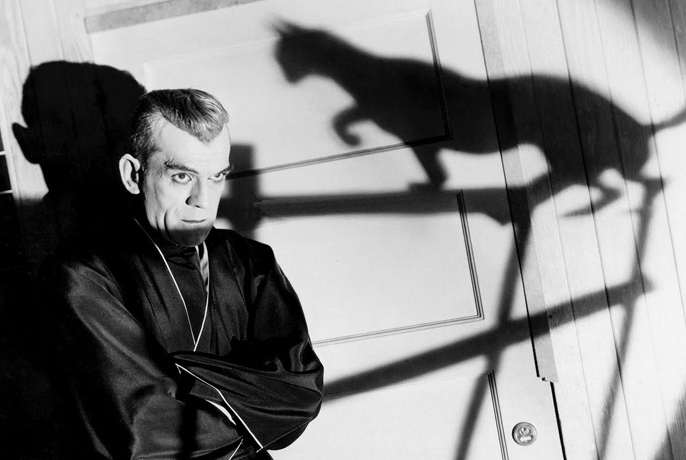
On “The Black Cat’s” director and cast:
Auteur: “The Black Cat,” Universal’s highest grossing movie of 1934, is a reflection of Austrian director Ulmer, who also did uncredited costume design, set design and co-plotting. (Ulmer is purported to have done set design for the German touchstones “Der Golem,” “Metropolis” and “M.”) Ulmer’s filmography is infamously hit-and-miss; his decline in clout and stature is sometimes attributed to his affair with a producer’s wife (who later married Ulmer). The director is best remembered for “The Black Cat” and another downer, the revered low-budget noir of 1945, “Detour.”
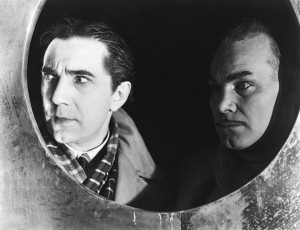
Milquetoast-y hero: David Manners may have been a milquetoast-y male lead, but you can’t deny his horror-film pedigree. Manners played the heroes in “Dracula” (1931) and “The Mummy” (1932), so he had significant history with both stars of “The Black Cat.”
Burly Brit: Harry Cording, who played Werdegast’s silent servant Thamal, was a burly Brit who popped up when Hollywood films called for a bruiser. Cording is the knight who throws the spear at Errol Flynn in “The Adventures of Robin Hood” (1938), as Flynn’s Robin is verbally jousting with Claude Rains’ Prince John. The jousting thereafter was, ahem, not of the verbal sort.
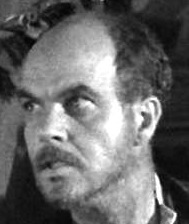
Minor player: One of the cultists is good old Michael Mark, a Russian actor seen in minor and bit roles in many horror films, yet no one seems to remember him. (Maybe because he was diminutive and folically deprived?) Think about this: Mark is one of the judges who sentenced Ygor to hang in 1939’s “Son of Frankenstein” (he is killed by the monster at Ygor’s direction), and he’s the scientist who invents the experimental beauty cream worn by “The Wasp Woman” (1959). Talk about opposite ends of the horror genre — both in chronology and in quality.
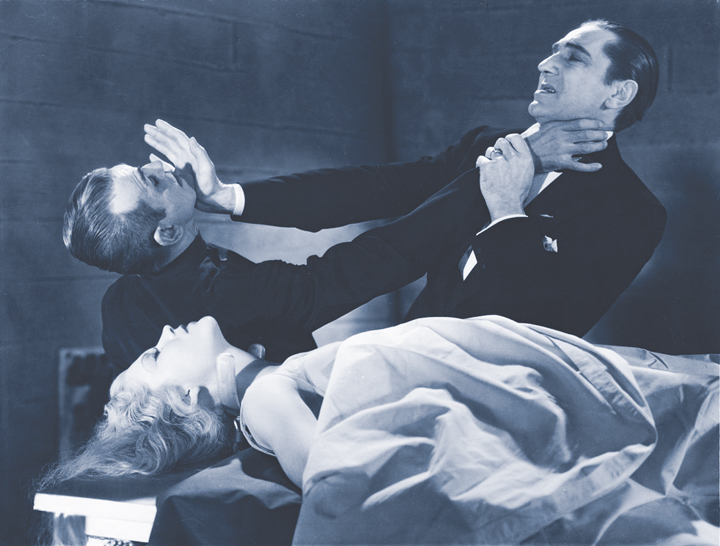
Still hammy: Yep, that’s John Carradine playing the organ during the Black Mass. (Even shot from behind, Carradine is hamming it up.) You also catch a glimpse of him in a group shot of the cultists walking behind Karloff. Eleven years later, Karloff would extract a wooden stake from Carradine’s heart in “House of Frankenstein.”
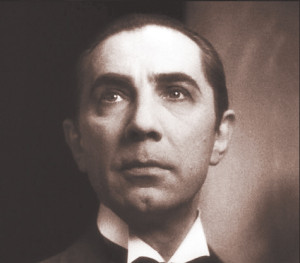
Beautiful and sad: Bela Lugosi wears no special makeup as Vitus Werdegast, and he was never more handsome. During the Black Mass sequence, there is an affecting series of close-up shots of individual cultists which ends on one of Lugosi. He looks beautiful, sad, resigned to his own death, but hopeful for a just outcome. It is the most affecting single shot of Lugosi’s face outside of “Dracula.”
Severe look: Karloff is a different story. As Poelzig, his look can be called severe. Karloff was made up by – who else? — Jack P. Pierce, the makeup artist who earlier transformed the actor’s appearance in “Frankenstein” (1931) and “The Mummy” (1932). Here, Pierce goes for a feline look. Karloff’s face is death-mask pale; his hairline is sculpted into a harsh widow’s peak; his downturned eyebrows are black; his lips and the rims of his eyes are darkened; his loungewear is crisp and uniform-like; he has the posture of a statue. Karloff’s Poelzig looks like the devil himself.
